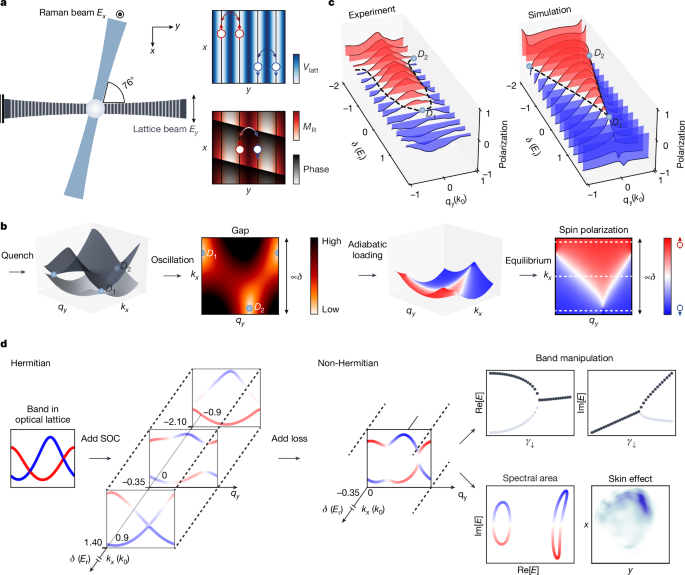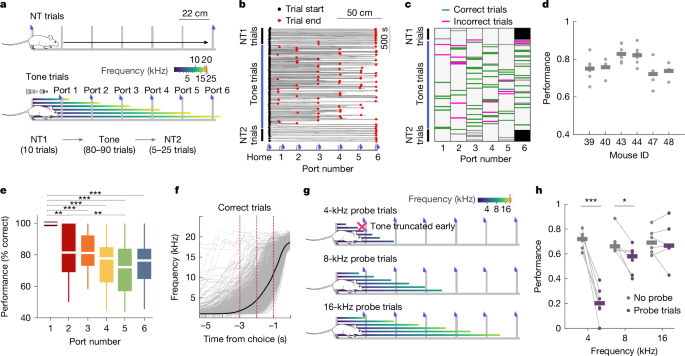0 Comentários
0 Compartilhamentos

Diretório
Diretório
-
Faça Login para curtir, compartilhar e comentar!
-
 WWW.FORBES.COMSniper Elite: Resistance - Release Date And 10 Things You Should KnowSniper Elite: ResistanceCredit: Fireshine GamesThe Sniper Elite series dates back nearly 20 years to 2005. The series has sold more than 30 million units across various releases, generations of consoles, and on PC.The newest version drops soon. Here is a look at the ten things you should know about Sniper Elite: Resistance.Sniper Elite: Resistance Release DateThe latest version of the series, Sniper Elite: Resistance, is set to launch on January 30, 2025. There is an early access option for users who pre-order the Deluxe Edition of the game. Those users can gain full access on January 28.MORE FOR YOUPlatformsSniper Elite: Resistance will be available on PlayStation 5, PlayStation 4, Xbox Series X|S, Xbox One, and PC.Game Pass AvailabilityXbox users are getting a special treat with SER. The game will be available on Xbox Game Pass from day one of its release. Usually, it takes months for a new release to reach Game Pass.New ProtagonistUsers will now take control of Harry Hawker, an agent of the Special Operations Executive (SOE). Hawker has been a character in the Sniper Elite universe since Sniper Elite 3, which released in 2014. However, SER will mark Hawkers debut as the lead character.SettingSER is set in France during World War II. The events in this version are designed to run alongside the story in Sniper Elite 5. The narrative is set in occupied France during World War II, running parallel to the events of Sniper Elite 5, which released in 2022 and was set in northwest France.StoryHawker is charged with preventing the Nazis from developing a powerful weapon called the Wunderwaffe. Users can play single or cooperative through the campaign. Here is a look at the reveal trailer:Gameplay MechanicsPerhaps no series has ever delved deeper into the mechanics of being an effective sniper. Like previous versions in the series, the developers pushed to deliver unique sniping mechanics and stealth elements wrapped in third-person combat that is consistent with what fans of the series have become accustomed to playing.SER isnt going to push your consoles visual excellence capabilities, but thats never been the draw of the series. SERs draw will be its gameplay, atmosphere, and focus on stealth and sniper accuracy.Here is a look at gameplay videos from Game Riot:Propaganda MissionsThe propaganda missions are a cool iteration of side missions. In SER, users complete propaganda missions by collecting propaganda posters throughout the maps that played a significant role in shaping the public narrative during World War II.Pre-Order BonusesSERs pre-order bonuses consist of a bonus mission: Target Fhrer, an additional weapon skin, and the Karabiner 98 Rifle. The Deluxe Edition has an additional bonus, which includes the M1911 Pistol and the January 28 access.Season PassUsers who purchase the SER season pass will get the following:3 Campaign Missions3 Weapon Packs3 Weapon Skin Packs1 Character Skin PackCheck out the ten things you should know about Dynasty Warriors: Origins and Donkey Kong Country Returns HD as well.0 Comentários 0 Compartilhamentos
WWW.FORBES.COMSniper Elite: Resistance - Release Date And 10 Things You Should KnowSniper Elite: ResistanceCredit: Fireshine GamesThe Sniper Elite series dates back nearly 20 years to 2005. The series has sold more than 30 million units across various releases, generations of consoles, and on PC.The newest version drops soon. Here is a look at the ten things you should know about Sniper Elite: Resistance.Sniper Elite: Resistance Release DateThe latest version of the series, Sniper Elite: Resistance, is set to launch on January 30, 2025. There is an early access option for users who pre-order the Deluxe Edition of the game. Those users can gain full access on January 28.MORE FOR YOUPlatformsSniper Elite: Resistance will be available on PlayStation 5, PlayStation 4, Xbox Series X|S, Xbox One, and PC.Game Pass AvailabilityXbox users are getting a special treat with SER. The game will be available on Xbox Game Pass from day one of its release. Usually, it takes months for a new release to reach Game Pass.New ProtagonistUsers will now take control of Harry Hawker, an agent of the Special Operations Executive (SOE). Hawker has been a character in the Sniper Elite universe since Sniper Elite 3, which released in 2014. However, SER will mark Hawkers debut as the lead character.SettingSER is set in France during World War II. The events in this version are designed to run alongside the story in Sniper Elite 5. The narrative is set in occupied France during World War II, running parallel to the events of Sniper Elite 5, which released in 2022 and was set in northwest France.StoryHawker is charged with preventing the Nazis from developing a powerful weapon called the Wunderwaffe. Users can play single or cooperative through the campaign. Here is a look at the reveal trailer:Gameplay MechanicsPerhaps no series has ever delved deeper into the mechanics of being an effective sniper. Like previous versions in the series, the developers pushed to deliver unique sniping mechanics and stealth elements wrapped in third-person combat that is consistent with what fans of the series have become accustomed to playing.SER isnt going to push your consoles visual excellence capabilities, but thats never been the draw of the series. SERs draw will be its gameplay, atmosphere, and focus on stealth and sniper accuracy.Here is a look at gameplay videos from Game Riot:Propaganda MissionsThe propaganda missions are a cool iteration of side missions. In SER, users complete propaganda missions by collecting propaganda posters throughout the maps that played a significant role in shaping the public narrative during World War II.Pre-Order BonusesSERs pre-order bonuses consist of a bonus mission: Target Fhrer, an additional weapon skin, and the Karabiner 98 Rifle. The Deluxe Edition has an additional bonus, which includes the M1911 Pistol and the January 28 access.Season PassUsers who purchase the SER season pass will get the following:3 Campaign Missions3 Weapon Packs3 Weapon Skin Packs1 Character Skin PackCheck out the ten things you should know about Dynasty Warriors: Origins and Donkey Kong Country Returns HD as well.0 Comentários 0 Compartilhamentos -
 WWW.FORBES.COMEvenflo Sensory Soothe For Car Seats Promises Calm For Crying BabiesBaby stopped crying! Sensory Soothe turns a car seat handle into a little entertainment center. EvenfloIf youve ever hit the road with a fussy baby in tow, you know how stressful it can be when the cries wont stop. Evenflo, maker of car seats and other baby gear, on Wednesday announced a product aimed at turning down the chaos during those less-than-peaceful car rides.Introduced at CES 2025 in Las Vegas, Sensory Soothe is an app-connected feature thats built directly into the handle of the companys newest premium standalone car seats and travel system strollers. You, the frazzled parent, fire up the app and choose from a selection of sounds and lights to entertain, and hopefully calm, your pint-size passenger. You can also activate the smart handle with buttons located on the unit.If youre already on the highway when your little one starts losing it, you can fire up Sensory Soothe with Siri and Google voice commands. An introductory video for the product shows a stressed-out mom saying, Hey Siri, turn on Sensory Soothe handle. Her crying baby instantly turns into a peaceful angel, but your mileage may vary.You can control the Sensory Soothe feature with an app, or via voice commands if you're driving. EvenfloSensory Soothe lets you mix sounds and lights to create new combinations customized to your little ones preferences perhaps a mini mobile disco will do the trick? Sounds include white noise, lullabies, bird chirps and upbeat tunes.MORE FOR YOUIts easy enough to load up a car seat with toys, of course, but Evenflo touts safety as one of the big draws here.The built-in lights and sounds right on the car seats carry handle eliminate the need for parents to feel like they need to attach or add on after-market soothing toys for their child that could become potential hazards or projectiles in the case of a crash, Sarah Haverstick, senior manager of safety advocacy and consumer care at Evenflo, said in a statement.The smart handle is powered by four AA batteries, providing battery life of more than 15 hours, Evenflo says.How Much Will Sensory Soothe Car Seats Cost?Car seats with Sensory Soothe are suitable for preemies and infants between 3 and 30 pounds, start shipping in mid-February and will be available at online retailers including Babylist, Amazon, Target and Walmart. Sensory Soothe products will start at $259 for a car seat and $649 for a travel system, according to Mashable, though I know a few parents wholl get wind of this products promise and probably say, Take my money, no further questions asked.The Consumer Electronics Show runs through Friday and is featuring plenty of car gadgets for grown-ups too. Dolby, for example, wants to turn your car into a home theater on wheels. Come to think of it, todays tech-savvy kids might get just as excited about that one as their parents.0 Comentários 0 Compartilhamentos
WWW.FORBES.COMEvenflo Sensory Soothe For Car Seats Promises Calm For Crying BabiesBaby stopped crying! Sensory Soothe turns a car seat handle into a little entertainment center. EvenfloIf youve ever hit the road with a fussy baby in tow, you know how stressful it can be when the cries wont stop. Evenflo, maker of car seats and other baby gear, on Wednesday announced a product aimed at turning down the chaos during those less-than-peaceful car rides.Introduced at CES 2025 in Las Vegas, Sensory Soothe is an app-connected feature thats built directly into the handle of the companys newest premium standalone car seats and travel system strollers. You, the frazzled parent, fire up the app and choose from a selection of sounds and lights to entertain, and hopefully calm, your pint-size passenger. You can also activate the smart handle with buttons located on the unit.If youre already on the highway when your little one starts losing it, you can fire up Sensory Soothe with Siri and Google voice commands. An introductory video for the product shows a stressed-out mom saying, Hey Siri, turn on Sensory Soothe handle. Her crying baby instantly turns into a peaceful angel, but your mileage may vary.You can control the Sensory Soothe feature with an app, or via voice commands if you're driving. EvenfloSensory Soothe lets you mix sounds and lights to create new combinations customized to your little ones preferences perhaps a mini mobile disco will do the trick? Sounds include white noise, lullabies, bird chirps and upbeat tunes.MORE FOR YOUIts easy enough to load up a car seat with toys, of course, but Evenflo touts safety as one of the big draws here.The built-in lights and sounds right on the car seats carry handle eliminate the need for parents to feel like they need to attach or add on after-market soothing toys for their child that could become potential hazards or projectiles in the case of a crash, Sarah Haverstick, senior manager of safety advocacy and consumer care at Evenflo, said in a statement.The smart handle is powered by four AA batteries, providing battery life of more than 15 hours, Evenflo says.How Much Will Sensory Soothe Car Seats Cost?Car seats with Sensory Soothe are suitable for preemies and infants between 3 and 30 pounds, start shipping in mid-February and will be available at online retailers including Babylist, Amazon, Target and Walmart. Sensory Soothe products will start at $259 for a car seat and $649 for a travel system, according to Mashable, though I know a few parents wholl get wind of this products promise and probably say, Take my money, no further questions asked.The Consumer Electronics Show runs through Friday and is featuring plenty of car gadgets for grown-ups too. Dolby, for example, wants to turn your car into a home theater on wheels. Come to think of it, todays tech-savvy kids might get just as excited about that one as their parents.0 Comentários 0 Compartilhamentos -
WWW.BUSINESSINSIDER.COMWhat to know about Microsoft Azure, the cloud computing platform and computing, networking, and storage servicesMicrosoft Azure is Microsoft's vaunted cloud computing platform.Azure offers a range of cloud-based solutions for the creation and management of applications.Most Azure products use a pay-as-you-go pricing model, but some products can also be used for free.Microsoft Azure is Microsoft's cloud computing platform that offers a range of cloud-based computing, networking, and data storage services.Microsoft Azure boasts "solutions that enable organizations to build, deploy, and manage applications and services through Microsoft's global network of data centers."Crystal clear, right? Don't worry, we'll break it down for you, but first just to clarify, Azure is indeed a computing platform, not just a storage platform.In short, Azure lets you do things that require much more processing power than your computer has because the computing is done far from your desk, couch, or that coffee shop table. Now for the longer view.When was Microsoft Azure created?The same company that brought you PowerPoint, Word, and more, launched Azure as Windows Azure back in 2010, rebranding it to Microsoft Azure in 2014. With the launch of the company's AI interface Copilot in 2023, using Azure became easier than ever, as the smart chat interface can help less tech-savvy users take advantage of Azure's many uses.Azure is now used by a plethora of small and large businesses and organizations. Indeed, Azure has become such a valuable platform and suite of services that Microsoft offers certifications in dozens of different Azure features and softwares to help IT professionals, developers, and engineers learn the intricacies.Azure has become a critical component of Microsoft's business model since its 2010 launch, with executives often boasting of Azure's revenues in earnings calls.However, Azure has not been immune from the turbulence within the tech industry in the post-pandemic era. Large rounds of Microsoft layoffs tend to be a "when" and not an "if" sort of thing, so it was hardly a great shock when hundreds of Azure employees were laid off in early summer 2024.The large round of job cuts specifically targeted workers in the Azure for Operators and Mission Engineering departments, and were part of a pattern of layoffs begun in 2023 and expanded in 2024.Microsoft Azure ServicesAzure allows you to use an already immense and ever-growing catalog of services; it would be way too heavy of a lift to cover them all here, so we will showcase a few of the things you can do via this cloud computing platform.Azure AI Search: This service allows you to conduct advanced, tailored smart searches and build up a vectored database of relevant retrieved information.Azure Open Datasets: Host and share curated datasets that are honed and refined through machine learning, growing more accurate over time.Speaker Recognition: This service allows for the ever-improving recognition of speech and integrates spoken words into programming, documents, and more. It is multilingual, of course.Azure AI Content Safety: Azure can automatically watch out for images, text, and video content that might be inappropriate or simply irrelevant and filter them out of your content.How much does Microsoft Azure cost?Most Azure products use a pay-as-you-go model rather than fixed rates for different products or a flat monthly fee. Your costs could be as low as pennies each month for basic cloud storage or the managed hosting of a simple website or well into the thousands of dollars for enterprise-level use of myriad AI-enabled products.Many Azure products can also be used for free. New users can enjoy 25 services free for 12 months, while others remain free at all times to all people. These include API management, the Azure AI Bot Service, and the Azure AI Metrics Advisor, to name just a few.Microsoft Azure vs. AWS and Google CloudAmazon Web Services (AWS) is the heavy hitter in cloud computing and storage, arguably leading the way in networking, cloud storage, mobile development, and cybersecurity.Google Cloud Platform GCP is big on data analysis and arguably allows the easiest user experience and more seamless interaction with products created by other brands.Microsoft Azure, for its part, provides vastly scalable and efficient software products, and it's usually cheaper than Google Cloud or AWS.0 Comentários 0 Compartilhamentos
-
WWW.BUSINESSINSIDER.COMUS dockworkers struck a deal with their employers, averting a strike that could have crippled shippingThe International Longshoremen's Association (ILA) and the US Maritime Alliance have struck a deal.This deal averted a potential strike involving thousands of dockworkers.The strike would have crippled shipping lines along the East and Gulf Coasts.The International Longshoremen's Association and the US Maritime Alliance said Wednesday they had agreed on a new six-year master contract.The two sides said in a joint statement that this will allow them to avoid any work stoppages on January 15."This agreement protects current ILA jobs and establishes a framework for implementing technologies that will create more jobs while modernizing East and Gulf coast ports making them safer and more efficient, and creating the capacity they need to keep our supply chains strong," the joint statement read, adding that the deal was a "win-win agreement."The ILA and USMX said they would get their members to review and approve the agreement before it is released publicly. For now, both sides will continue to operate under their current contract until the terms of the new agreement are ratified via a vote.The strike would have potentially paralyzed shipping lines along the East and Gulf Coasts.Details of the agreement were not made public, but the joint statement said dockworkers received some protections against having their jobs replaced by automation, which was one of the union's key concerns.The ILA had the support of President-elect Donald Trump, who said in a Truth Social post in December that the amount of money saved by automation on US docks was "nowhere near the distress, hurt, and harm it causes for American Workers, in this case, our Longshoremen."Members of the ILA previously went on strike in October for three days. The strike ended when the union secured higher pay, while other contract negotiations continued, and members returned to work. That agreement provided a 62% pay increase over the next six years.0 Comentários 0 Compartilhamentos
-
 WWW.DISCOVERMAGAZINE.COML.A. Firestorms Have Already Burned an Area Nearly Twice as Large as ManhattanNASAs Aqua satellite captured this view of the Palisades Fire blazing on the afternoon of the day it erupted, Jan. 7, 2025. (Credit: NASA Earth Observatory)NewsletterSign up for our email newsletter for the latest science newsThe headline in the L.A. Times says it all: 5 dead, more than 1,100 structures destroyed as firestorm besieges L.A. County By the time you are reading this, the devastation will almost certainly be worse.Since the Palisades Fire exploded on Tuesday, Jan. 7, other blazes have blown up, including the Eaton Fire near Pasadena, and the Hurst Fire around Sylmar. As I'm writing this on Wednesday evening, Jan. 8, more than 27,000 acres are burning, according to California's Department of Forestry and Fire Protection, also known as CalFire. That's an area nearly twice as large as Manhattan Island in New York. And much more acreage is going to burn before this is all over.This should come as no surprise. Southern California has seen scant rain for nearly nine months. Combine that with winds howling at 100 miles per hour, and a cataclysmic situation was all but inevitable.The View From SpaceI'll be following this developing story and will offer additional weather and climate context when new information emerges. In the meantime, I thought I would share some dramatic remote sensing imagery of the fires: The GOES-18 satellite captured the animated view above of the Palisades and Eaton fires blazing in the Los Angeles area on Jan. 8, 2025. It combines visible wavelengths of light with infrared, which reveals the heat signatures of the fires. The Palisades Fire as seen by the Sentinel 2A satellite on Jan. 7, 2025. (Credit: Modified Copernicus Sentinel data accessed using EO Browser, processed by Tom Yulsman)I created this simulated 3D vew of the Palisades Fire using imagery acquired by the Sentinel 2A satellite not long after the blaze ignited on Jan. 7. The oblique view looks toward the south, with smoke streaming out over Pacific Palisades and the Pacific. Flames are faintly visible through the smoke in the foreground. Smoke plumes from multiple wildfires blazing in the Los Angeles area are seen in this image acquired by NASA's Aqua satellite on Jan. 8, 2025. (Credit: NASA Worldview)The winds have not relented today. They are blowing huge plumes of smoke to the southwest, way out over the Pacific Ocean, as seen in this image captured by NASA's Aqua satellite. Stay tuned for more.0 Comentários 0 Compartilhamentos
WWW.DISCOVERMAGAZINE.COML.A. Firestorms Have Already Burned an Area Nearly Twice as Large as ManhattanNASAs Aqua satellite captured this view of the Palisades Fire blazing on the afternoon of the day it erupted, Jan. 7, 2025. (Credit: NASA Earth Observatory)NewsletterSign up for our email newsletter for the latest science newsThe headline in the L.A. Times says it all: 5 dead, more than 1,100 structures destroyed as firestorm besieges L.A. County By the time you are reading this, the devastation will almost certainly be worse.Since the Palisades Fire exploded on Tuesday, Jan. 7, other blazes have blown up, including the Eaton Fire near Pasadena, and the Hurst Fire around Sylmar. As I'm writing this on Wednesday evening, Jan. 8, more than 27,000 acres are burning, according to California's Department of Forestry and Fire Protection, also known as CalFire. That's an area nearly twice as large as Manhattan Island in New York. And much more acreage is going to burn before this is all over.This should come as no surprise. Southern California has seen scant rain for nearly nine months. Combine that with winds howling at 100 miles per hour, and a cataclysmic situation was all but inevitable.The View From SpaceI'll be following this developing story and will offer additional weather and climate context when new information emerges. In the meantime, I thought I would share some dramatic remote sensing imagery of the fires: The GOES-18 satellite captured the animated view above of the Palisades and Eaton fires blazing in the Los Angeles area on Jan. 8, 2025. It combines visible wavelengths of light with infrared, which reveals the heat signatures of the fires. The Palisades Fire as seen by the Sentinel 2A satellite on Jan. 7, 2025. (Credit: Modified Copernicus Sentinel data accessed using EO Browser, processed by Tom Yulsman)I created this simulated 3D vew of the Palisades Fire using imagery acquired by the Sentinel 2A satellite not long after the blaze ignited on Jan. 7. The oblique view looks toward the south, with smoke streaming out over Pacific Palisades and the Pacific. Flames are faintly visible through the smoke in the foreground. Smoke plumes from multiple wildfires blazing in the Los Angeles area are seen in this image acquired by NASA's Aqua satellite on Jan. 8, 2025. (Credit: NASA Worldview)The winds have not relented today. They are blowing huge plumes of smoke to the southwest, way out over the Pacific Ocean, as seen in this image captured by NASA's Aqua satellite. Stay tuned for more.0 Comentários 0 Compartilhamentos -
 WWW.NATURE.COMHeritable polygenic editing: the next frontier in genomic medicine?Nature, Published online: 08 January 2025; doi:10.1038/s41586-024-08300-4We discuss the potential consequences and ethical concerns of polygenic genome editing of human embryos to alter specific variants associated with polygenic diseases, highlighting the possibility of reducing disease susceptibility while exacerbating health inequalities.0 Comentários 0 Compartilhamentos
WWW.NATURE.COMHeritable polygenic editing: the next frontier in genomic medicine?Nature, Published online: 08 January 2025; doi:10.1038/s41586-024-08300-4We discuss the potential consequences and ethical concerns of polygenic genome editing of human embryos to alter specific variants associated with polygenic diseases, highlighting the possibility of reducing disease susceptibility while exacerbating health inequalities.0 Comentários 0 Compartilhamentos -
 WWW.NATURE.COMTwo-dimensional non-Hermitian skin effect in an ultracold Fermi gasNature, Published online: 08 January 2025; doi:10.1038/s41586-024-08347-3A two-dimensional non-Hermitian topological band is created in an ultracold system of fermions, which exhibits the non-Hermitian skin effect.0 Comentários 0 Compartilhamentos
WWW.NATURE.COMTwo-dimensional non-Hermitian skin effect in an ultracold Fermi gasNature, Published online: 08 January 2025; doi:10.1038/s41586-024-08347-3A two-dimensional non-Hermitian topological band is created in an ultracold system of fermions, which exhibits the non-Hermitian skin effect.0 Comentários 0 Compartilhamentos -
 WWW.NATURE.COMHippocampal neuronal activity is aligned with action plansNature, Published online: 08 January 2025; doi:10.1038/s41586-024-08397-7Using high-density electrophysiological recordings, how internally generated cell assemblies are updated by action plans to meet external goals is explored.0 Comentários 0 Compartilhamentos
WWW.NATURE.COMHippocampal neuronal activity is aligned with action plansNature, Published online: 08 January 2025; doi:10.1038/s41586-024-08397-7Using high-density electrophysiological recordings, how internally generated cell assemblies are updated by action plans to meet external goals is explored.0 Comentários 0 Compartilhamentos -
 GAMERANT.COMHow To Get The Virtuous Treaty Back In NieR: AutomataThe beginning of NieR: Automata throws players into the beginning of one of 2B's missions. Once you land your flight unit and begin fighting with your melee weapons, you'll get access to a one-handed sword and a two-handed sword.0 Comentários 0 Compartilhamentos
GAMERANT.COMHow To Get The Virtuous Treaty Back In NieR: AutomataThe beginning of NieR: Automata throws players into the beginning of one of 2B's missions. Once you land your flight unit and begin fighting with your melee weapons, you'll get access to a one-handed sword and a two-handed sword.0 Comentários 0 Compartilhamentos



